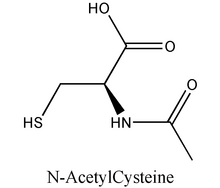Kay J, Chow WH, Chan TM, et al. JAMA 2003;289:553-558
CONTEXT: The antioxidant acetylcysteine prevents acute contrast nephrotoxicity in patients with impaired renal function who undergo computed tomography scanning. However, its role in coronary angiography is unclear. OBJECTIVE: To determine whether oral acetylcysteine prevents acute deterioration in renal function in patients with moderate renal insufficiency who undergo elective coronary angiography. DESIGN AND SETTING: Prospective, randomized, double-blind, placebo-controlled trial conducted from May 2000 to December 2001 at the Grantham Hospital at the University of Hong Kong. PARTICIPANTS: Two hundred Chinese patients aged mean (SD) 68 (6.5) years with stable moderate renal insufficiency (creatinine clearance <60 mL/min [1.00 mL/s]) who were undergoing elective coronary angiography with or without intervention. INTERVENTION: Participants were randomly assigned to receive oral acetylcysteine(600 mg twice per day; n = 102) or matching placebo tablets (n = 98) on the day before and the day of angiography. All patients received low-osmolality contrast agent. MAIN OUTCOME MEASURES: Occurrence of more than a 25% increase in serum creatinine level within 48 hours after contrast administration; change in creatinine clearance and serum creatinine level. RESULTS: Twelve control patients (12%) and 4 acetylcysteine patients (4%) developed a more than 25% increase in serum creatinine level within 48 hours after contrast administration (relative risk, 0.32; 95% confidence interval [CI], 0.10-0.96: P =.03). Serum creatinine was lower in the acetylcysteine group (1.22 mg/dL [107.8 micromol/ LI; 95% CI, 1.11-1.33 mg/dL vs 1.38 mg/dL [122.9 micromol/L]; 95% CI, 1.27-1.49 mg/dL; P =.006) during the first 48 hours after angiography. Acetylcysteine treatment significantly increased creatinine clearance from 44.8 mL/min (0.75 mL/s) (95% CI, 42.7-47.6 mL/min) to 58.9 mL/min (0.98 mL/s) (95% CI, 55.6-62.3 mL/min) 2 days after the contrast administration (P<.001).The increase was not significant in the control group (from 42.1 to 44.1 mL/min [0.70 to 0.74 mL/s]; P =. 15). The benefit of acetylcysteine was consistent among various patient subgroups and persistent for at least 7 days. There were no major treatment-related adverse events. CONCLUSION: Acetylcysteine protects patients with moderate chronic renal insufficiency from contrast-induced deterioration in renal function after coronary angiographic procedures, with minimal adverse effects and at a low cost.
COPYRIGHT 2003 Thorne Research Inc.
COPYRIGHT 2003 Gale Group



